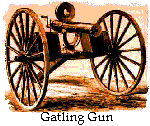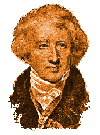
![]()
Carbonari - Members of certain secret revolutionary societies that were current in Italy and France in the early part of the
19th century, aimed at freeing Italy from foreign rule and obtaining
constituional rule. Lord Byron was a member, joining out of "love
for Italy." The organization shrouded itself in an air of
mystery, with a secret terminology and fantastic rituals, and
included all ranks of people as its members -- nobles, army officers,
peasants, landlords, priests, and government officials. In January
of 1858, an assassination attempt was made on Napoleon III, injuring
the French Emperor and killing or wounding sixty people. The plot
supposedly was hatched in England by members of the Carbonari
Society and the grenades used were made in England. Mass hysteria
resulted on both sides of the Channel -- 20,000 Londoners demonstrated
in Hyde Park, shouting "Down with the French!"
![]()
![]() The Catholic Encyclopedia on the Carbonari
The Catholic Encyclopedia on the Carbonari
Cart - The Swiss valet Prince Albert brought with him from Coburg, who had been in his service since the prince was a child.
Catastrophism - A theory that, since the flow of water and crumbling
of rocks could not have produced the earth's surface in the years since Biblical creation, drastic changes visible in landforms
were cause by sudden cataclysms.
![]()
![]() Catastrophism FAQs from talk.origins
Catastrophism FAQs from talk.origins
![]()
![]() Creationism FAQs from talk.origins
Creationism FAQs from talk.origins
Celluloid - The first synthetic plastic material, also known as xylonite or artificial ivory. First prepared in 1865, the material, a highly flammable homogeneous colloidal dispersion of cellulose nitrate and camphor, was commercially important for its toughness, resilience, low manufacturing cost, and resistance to water, oils, and dilute acids.
Chartist movement - A revolutionary political movement, chiefly
working class, that came to prominence in 1838 and disappeared
after 1850. It arose as a result of the Reform Act of 1832, which
had denied voting rights to working people because they lacked
real property. The Chartists demanded universal suffrage, equal
electoral districts, vote by ballot, annually elected parliament,
payment for members of parliament, and abolition of the property
qualification. Chartism did not live to see it, but most of its
demands were met in the latter half of the 19th century. (And
some find themselves under attack again at the end of the 20th.)
![]()
![]() The People's Petition (1838)
The People's Petition (1838)
![]()
![]() The end of Chartism
The end of Chartism
![]()
![]() Women Chartists
Women Chartists
Chautauqua Movement - A movement in American adult education, started 1874 at Chautauqua, New York, where an expanded summer Sunday school offered courses in science and the humanities. After 1900, traveling chautauquas presented summertime lectures and improving entertainment under large tents.
Choshu - A large samurai domain in western Honshu that was, at the end of the Tokugawa period, a hotbed of anti-European sentiment. When the forts near Shimonoseki in Choshu were demolished by European and American ships in 1863, the Choshu samurai displayed an immensely practical ability to rethink their course of action: they reversed their isolationist sentiments and, as did the Kyushu province of Satsuma, began studying Western military technology.
 Civil War, U.S. (1860-1865) - The first great war of modern times,
in which industry and transportation each played a part. The North won.
Civil War, U.S. (1860-1865) - The first great war of modern times,
in which industry and transportation each played a part. The North won.
Class war - In The Communist Manifesto, Karl Marx predicted
an increasing polarization of society, with ever sharper conflict
between those at each end, culminating in a social revolution.
![]()
![]() Karl Marx
Karl Marx
Coal-tar dyes - In the early 19th century, Europe was still using pretty much the same dozen or so dyes it had used since the Middle Ages, mordanted to produce a palette of familiar colors. The first aniline dye, made from coal tar, was produced accidentally in 1856 by William Perkin, a chemistry student, who was trying to synthesize quinine. This purple dye, inexpensive and colorfast, he called mauve. The new color first took England by storm, then France, and gave its name to an entire decade.
Samuel Taylor Coleridge(1772-1834) - English Romantic poet and philosopher. Close friend of Southey and Wordsworth.
![]()
![]() Coleridge as a reader of gothic novels
Coleridge as a reader of gothic novels
![]()
![]() A collection of Coleridge's poetry and prose
A collection of Coleridge's poetry and prose
Wilkie Collins (1824-1889) - English author of The Woman in
White, The Moonstone, and other mystery, suspense and
crime novels. The novel of sensation, the genre at which Collins
excelled, flourished in the mid-19th century and after, depicting
sensational happenings, lurid secrets, and improbable events.
M.E. Bradley (Lady Audley's Secret) was another popular
writer in the type. The contemporary thriller is a descendant.
![]()
![]() A brief extract from Lady Audley's Secret
A brief extract from Lady Audley's Secret
William Collins (1788-1847) - Enormously popular painter of landscapes
and picturesque rustic scenes. Father of Wilkie Collins.
![]()
![]() William Collins at the Tate
William Collins at the Tate
 Samuel Colt (1814-1862) - American, inventor of the Colt revolver,
a single-barrelled pistol or rifle with a rotating, many-chambered
breech. His patented weapons were first used in the Seminole War
in the United States. They were also used by the Texas Rangers
in the war for Texas independence. Lack of general acceptance
caused the Colt Patent Arms Company to fail in 1842, and Colt
turned his hand to other inventions, including electrically discharged
submarine mines, and the operation of a telegraph business utilizing
the world's first underwater cable.
Samuel Colt (1814-1862) - American, inventor of the Colt revolver,
a single-barrelled pistol or rifle with a rotating, many-chambered
breech. His patented weapons were first used in the Seminole War
in the United States. They were also used by the Texas Rangers
in the war for Texas independence. Lack of general acceptance
caused the Colt Patent Arms Company to fail in 1842, and Colt
turned his hand to other inventions, including electrically discharged
submarine mines, and the operation of a telegraph business utilizing
the world's first underwater cable.
Confederate Signal and Secret Service Bureau - Operated a system of secure communications for the Confederate War Department. Responsible for communications with Confederate agents in the North and in Europe and Canada. Most official records have been lost or destroyed.
Continental drift - The theory that the continents of the earth started as one land and drifted apart is one that was originally suggested by the Comte de Buffon in the 18th century. This was first comprehensively stated by Alfred Wegener in 1911, but it was generally believed among geologists for most of the 19th century that the present continents and oceans were only temporary features.
Corn laws - Laws controlling the import and export of wheat. In
early-19th-century England, there was much debate about the need
for import duties on wheat, which protected English landowners
but drove up the price of grain. In 1846, the middle classes,
in a display of the strength they had gained with enfranchisement
in 1832, effectively ended the Corn Laws, with the help of the
Conservative prime minister Robert Peel.
![]()
![]() The campaign for the repeal of the Corn Laws
The campaign for the repeal of the Corn Laws
 Cremorne Gardens - Pleasure gardens by the Thames in the Chelsea
section of London, with banquet hall, theater, American bowling
saloon, orchestra, grottoes, and "delightful lavender bowers."
It could accomodate 1500 people and entertain them fifteen hours
a day with a circus, sideshows, fireworks, and spectacular balloon
ascents (including, in 1864, the Mongolfier Fire Balloon). Opened
in 1845, it was closed in 1877, due to the increasingly low and
rowdy nature of the crowds it attracted, and the site was built
over.
Cremorne Gardens - Pleasure gardens by the Thames in the Chelsea
section of London, with banquet hall, theater, American bowling
saloon, orchestra, grottoes, and "delightful lavender bowers."
It could accomodate 1500 people and entertain them fifteen hours
a day with a circus, sideshows, fireworks, and spectacular balloon
ascents (including, in 1864, the Mongolfier Fire Balloon). Opened
in 1845, it was closed in 1877, due to the increasingly low and
rowdy nature of the crowds it attracted, and the site was built
over.
Crimean War 1854-1856 - In a war regarded as the most ill-managed in English history, the English and the French engaged Russia in the Crimean Peninsula. Despite the absence of automatic weapons, the allies managed, in their seige of Sevastopol and attack on its redan, to compensate by losing many men to disease and the cold of the Russian winter. It is distinguished as being the first war in which the telegraph was used, to the irritation of the French General Pélissier who, grown weary of constant kibitzing from Paris, attempted to resign his command, which he found "impossible to carry on at the paralysing end of an electric cable."
Criminal Anthropometry - In the 19th century, Cesare Lombroso
formulated a theory that the born criminal showed anomalies, physical
and mental, that indicated evolutionary throwbacks to primitive
man. Later, in the U.S., using elaborate anthropometric studies,
the physical anthropologist Ernest Hooton concluded that the typical
criminal shows a biological inferiority that leads to crime, especially
when exacerbated by bad social environments.
![]()
![]() Lombroso and his theories
Lombroso and his theories
Criminal Identification - In the absence of effective ways of determining who is bad, police departments have tried to determine simply who is who.
![]()
![]() A quick look at the history of individual identification
A quick look at the history of individual identification
Crinoline - In the 1840s, a crinoline was a stiff petticoat made
of horsehair and thread; by the mid-1850s it had grown to a light,
cage-like framework of whalebone, wire or watch-spring steel.
Unlike the hoop skirt, the crinoline spread to all classes, and
was worn by factory girls and even peasants.
![]()
![]() A watch-spring steel crinoline cage
A watch-spring steel crinoline cage
![]()
![]() Handy tips for corset-wearers
Handy tips for corset-wearers
Crockford's - A private club and gambling house at 50 Jermyn Street. Established in 1820, it boasted a lavishly appointed decor, an expensive chef, and a membership, some of which did not even gamble, drawn from the British aristocracy.
John Wilson Croker (1780-1857) - Tory leader and essayist, he opposed the Reform Act of 1832. "The Bill once passed," he said, "good night to the Monarchy, the Lords, and the Church."
 Georges Léopold Chrétien Frédéric Dagobert Cuvier (1769-1832)
- French naturalist, specialist in classification and comparative
anatomy of molluscs, fishes, and fossil reptiles and mammals and
their living relations. He essentially created the division of
paleontology that deals with mammals. He believed that the extinction
of species was caused by some local catastrophe, and that each species was created for its own special purpose.
Georges Léopold Chrétien Frédéric Dagobert Cuvier (1769-1832)
- French naturalist, specialist in classification and comparative
anatomy of molluscs, fishes, and fossil reptiles and mammals and
their living relations. He essentially created the division of
paleontology that deals with mammals. He believed that the extinction
of species was caused by some local catastrophe, and that each species was created for its own special purpose.
![]()
![]() Cuvier: "One of the finest minds in history"
Cuvier: "One of the finest minds in history"
![]()
The Difference Dictionary was first published
in slightly different form in Science Fiction Eye, Issue #8.
Text copyright 1990, 1996, 2000, 2003,
by Eileen K. Gunn.


